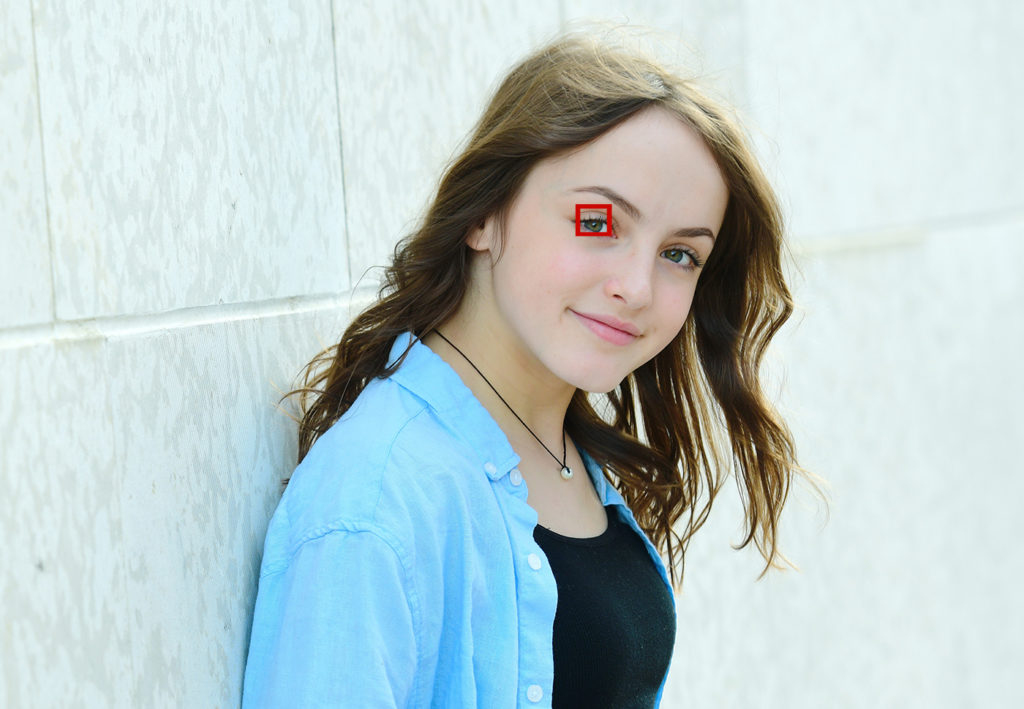8 Tips for better Outdoor Portraits
Portraits that pop!
8 Tips for better outdoor portraits
1) Use a single focus point…only.
When you pick the autofocus option that allows the camera to select focus points, you are doing your portraits a terrible disservice.
This feature of a camera is usually designed to pick whatever is closest to the lens and focus there. In some cases, like with my 1DS Mark III, the camera will choose a cluster of focus points and make a “best guess” based on averaging the distance between all of the chosen points. Using one focus point gives you, the photographer, ultimate control.

2) Always focus on the eyes
The eyes are the windows to the soul and should be the focal point of any good portrait. Not only are the eyes the most important part of a good portrait, but they are the sharpest element on the face and should be left that way.
When you are shooting with a wide aperture value and you’re focused on the eyes, the lens’s bokeh will aid in softening the skin, as well.

3) Shoot at the widest aperture
There are quite a few reasons to invest in a fast lens capable of wide aperture values; the most common is for shallow depth of field.
If you can shoot at ƒ/2.8 or ƒ/4, you should use it. Most fantastic natural light portraits are from wide aperture values, and it is all because of the wonderful smooth background blur we call “bokeh.”

4) Shoot portraits at 50mm or higher
The last thing you want to hear from a client is “Why does my head look swollen?”
Any focal length below 70mm can distort your subject. However, it doesn’t become very noticeable until you are below 50mm. The compression effect of a telephoto lens will also increase the blur of bokeh. Most of my portraits are done between 120mm and 200mm.

5) Shoot in the shade
Direct sunlight is harsh, makes your subject squint, and creates hard directional shadows and unpredictable white balance conditions. When shooting in the shade, there are no more harsh shadows, only smooth, milky shadows created by your subject’s natural features. With proper exposure and white balance, you can make these shots look amazing.

6) Use an existing reflector
For example, my guess is that about 75% of the delivery trucks on the planet are white. These big, white delivery trucks can make amazing fill light reflectors as long as they weren’t painted with an off-white. (A yellow tint can change the white balance in your shadows.) Picture framing outlets and craft stores always have medium-to-large-sized pieces of foam core lying around that have been left for scrap. They are usually more than happy to part with these scraps and, if not, chances are that there are pieces by the dumpster.

7) Bring a sheet and a few spring clamps from home
Leave the expensive 200-thread-count sheets on the bed. You already got them? Well, go put them back. You know that cheap old sheet you stuck in the corner of the closet to use as a drop cloth the next time you paint? Go get it.
(Another option is to buy the cheapest low-thread-count white top sheet you can find.)
A queen-sized sheet is an amazing, cheap diffuser. Sort of a seven-foot softbox for the sun. Wrap an edge of the sheet around a branch or clothesline and clamp for a sidelight.
(Anchor the bottom corners with rocks to keep the sheet from blowing into your image.) Clamp all four corners to anything you can above your subject for an overhead light.
8) Keep the powerlines and signs out!
We have already discussed keeping your camera focused on the eyes, but you must also keep the viewer’s mind focused on the image as a whole. Powerlines, signs, long single blades of grass, single pieces of garbage, and sometimes even trees can be serious distractions from the overall focus of the image: the person you are photographing.
Last, and most important, have a great time shooting! Enjoy what you’re doing, and it will show in your work (as well as in the expression of your subject).
